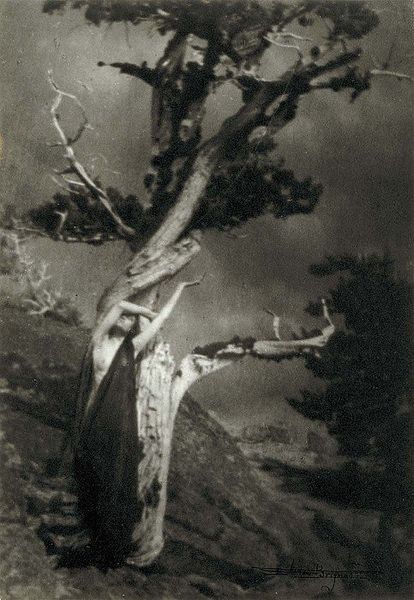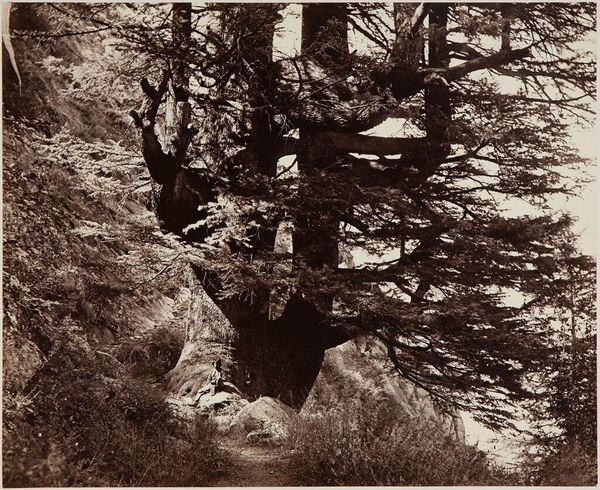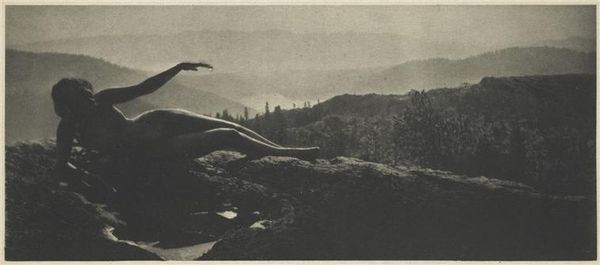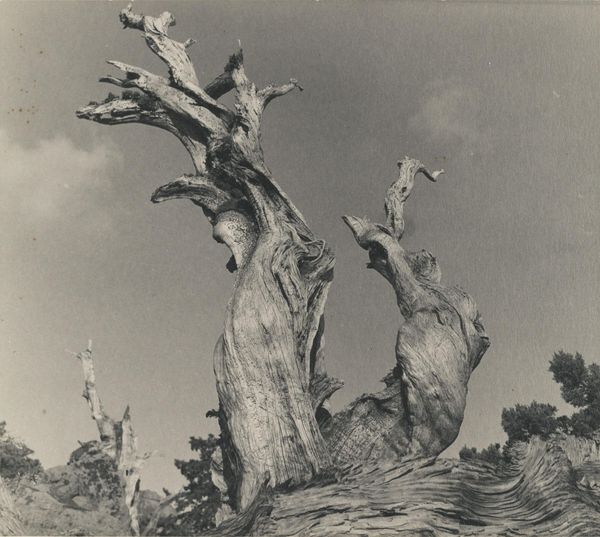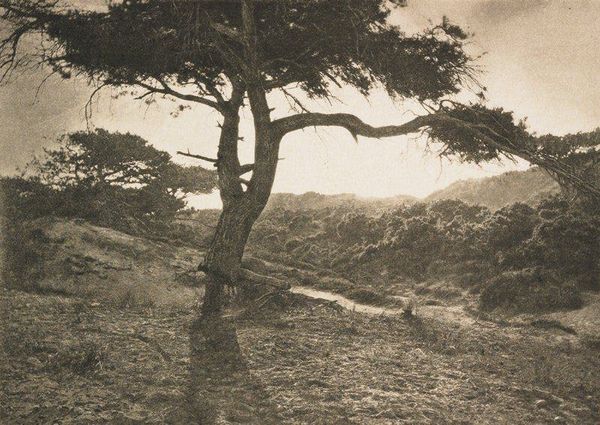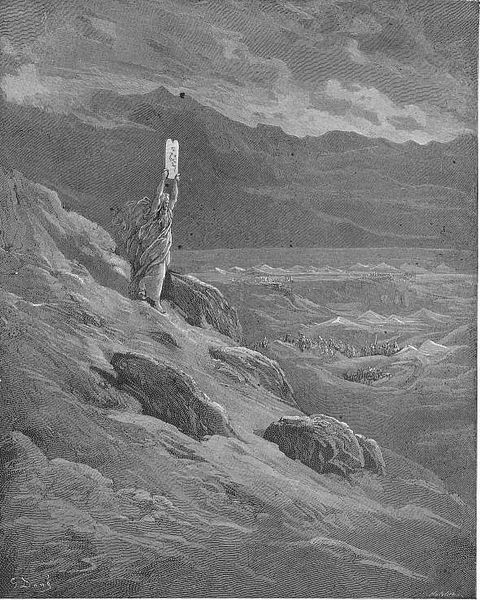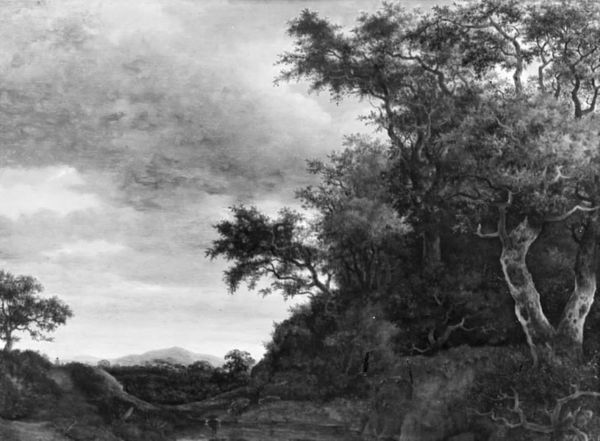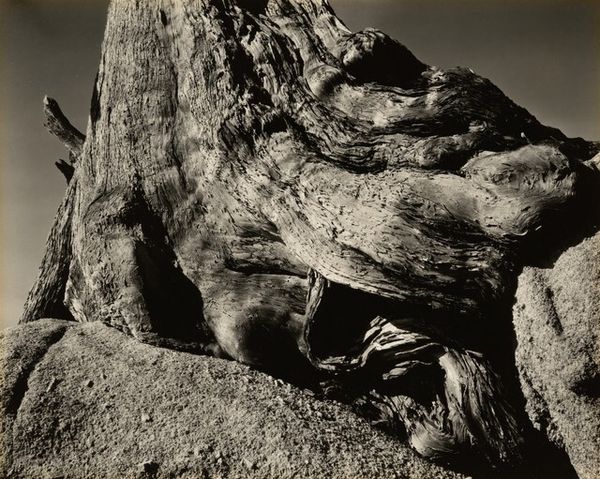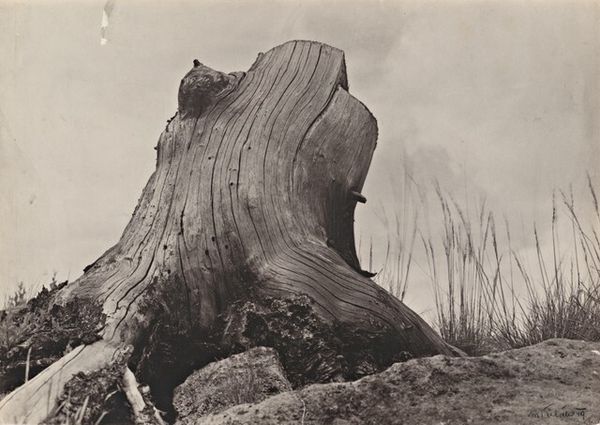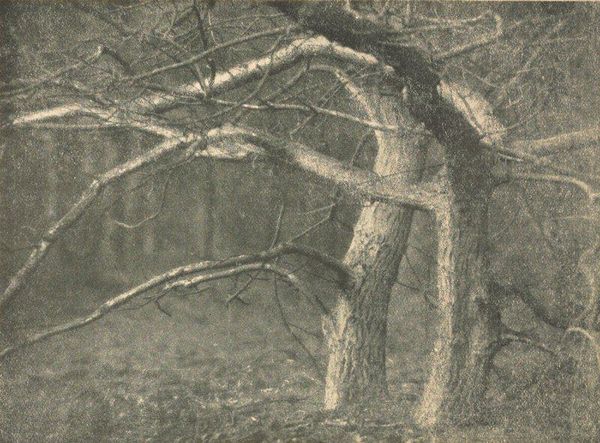
photography
#
tree
#
landscape
#
figuration
#
photography
#
romanticism
#
symbolism
#
nude
#
nature
#
monochrome
Copyright: Public domain
Editor: Here we have "Untitled," a photograph by Anne Brigman. The stark monochrome and the solitary nude figure perched on a rocky outcrop really give it a feeling of both vulnerability and strength. How do you interpret this work? Curator: Brigman's photographs, especially this one, are ripe for considering how early 20th-century female artists navigated representation of the female body. Given the artistic movements that preceeded its creation, we might view this work through the lens of symbolism and romanticism, reflecting an idealized version of feminine beauty within the sublime landscape. But what happens when we consider Brigman's positioning as a woman artist and photographer pushing against established norms of her time? Editor: So, it’s more than just a pretty picture? Curator: Exactly. Consider the era; this photograph subtly challenges prevailing Victorian ideals. By placing a nude woman in nature, Brigman reclaims the female body, associating it with the untamed and powerful. It's a quiet feminist act. Does that shift your perspective at all? Editor: It does! I was initially drawn to the aesthetic, but the idea of her actively redefining female representation makes the image much more potent. The contrast of the exposed figure against the rugged, natural setting, that is very evocative of vulnerability and defiance. Curator: Precisely. Brigman used symbolism, a nude figure as an expression, she questions social norms. It gives her voice and agency in times that weren’t open for women to do so. The photograph is timeless as women still face being silenced and judged in modern society. Editor: It’s fascinating to see how a single image can hold so much history and social commentary. I see this photo with new eyes. Curator: Indeed. Art often serves as a mirror reflecting not just beauty but the complex socio-political landscape of its time.
Comments
No comments
Be the first to comment and join the conversation on the ultimate creative platform.
